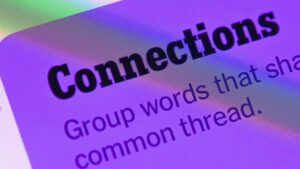
When you gaze at clouds, tree bark, or even the front of a car, do you sometimes perceive a face staring back at you? This phenomenon, known as “face pareidolia,” is a common illusion where our brains detect faces in patterns that aren’t actually faces. While typically harmless, new research published in the journal Perception suggests that individuals with visual snow syndrome—a rare neurological condition characterized by constant “visual static”—experience this phenomenon more intensely and frequently.
The study provides a unique insight into how an overactive brain might amplify erroneous illusory patterns perceived in the world. It also underscores the fact that perception is not a flawless reflection of reality.
Understanding Visual Snow Syndrome
Visual snow syndrome is marked by the persistent perception of flickering dots, akin to television static, across the entire visual field. Those affected report that these dots never disappear, even in complete darkness. The root cause of this syndrome remains elusive, but recent evidence points to hyperexcitability in the visual cortex—the brain region responsible for interpreting visual information. Essentially, the neurons tasked with processing visual data may be overactive, inundating perception with noise.
In addition to visual static, many individuals with visual snow syndrome experience migraines, light sensitivity, and afterimages or visual trails that linger post-motion. These symptoms can render everyday visual experiences both confusing and exhausting. Despite increased awareness, the condition remains under-diagnosed and poorly understood.
Testing the Impact of ‘Visual Snow’ on Perception
To investigate whether this hyperactive visual system alters how people interpret ambiguous visual input, a research team conducted an online experiment with over 250 volunteers. Participants first completed a brief questionnaire to ascertain whether they experienced symptoms of visual snow. They were then shown 320 images of everyday objects, ranging from tree trunks to coffee cups, and asked to rate, on a scale from 0 to 100, how easily they could discern a face in each image.
Out of the total participants, 132 individuals met the criteria for visual snow syndrome, while 104 formed a control group matched for age. The study also tracked whether participants experienced migraines, allowing for comparisons across four subgroups.
The Brain That Sees Too Much
The findings were striking: individuals with visual snow consistently assigned higher “face scores” to each image compared to those without the condition, indicating a greater likelihood of seeing faces in random textures and objects. Those with both visual snow and migraines scored the highest overall.
The results suggest that the same objects trigger a stronger illusion for those with visual snow syndrome, aligning with earlier theories that the visual snow brain is hyper-responsive.
Typically, our visual system generates quick, low-level “guesses” about what we’re seeing, followed by slower checks to confirm those guesses. When this feedback loop is disrupted by excessive neural activity, an early “false alarm,” such as mistaking an object for a face, may be amplified rather than corrected.
Link Between Migraine and Visual Snow
Migraine and visual snow have frequently been linked, with both involving abnormally high levels of cortical activity. During a migraine, visual neurons can become hypersensitive to flicker, light, and contrast. The study’s data suggest that when migraine and visual snow occur together, the brain’s sensitivity to illusory faces increases even further, potentially reflecting a shared neural pathway underlying both conditions.
Future research could leverage this relationship to develop new diagnostic tools. Face pareidolia tests are quick, accessible, and could be adapted for children or nonverbal patients who cannot easily describe what they see.
A New Perspective on Perception
Face pareidolia is not a disorder but rather a side effect of a perceptual system that prioritizes social information. Evolution has biased our visual system to spot faces first and ask questions later. For individuals with visual snow, this system may be overactive, causing their brains to “connect the dots” in visual noise, interpreting ambiguous input as meaningful patterns.
This finding supports the idea that visual snow is not merely a vision problem but a broader disturbance in how the brain interprets visual input. By understanding why some people perceive too much, we can learn more about how all of us perceive the world.
Why This Matters
Visual snow syndrome is often dismissed or misdiagnosed, leaving patients frustrated. Linking the condition to a measurable illusion like face pareidolia provides clinicians with a tangible sign of the altered brain activity underlying the symptoms. It also humanizes the experience, affirming that individuals with visual snow are not imagining their perceptions—their brains genuinely process the world differently.
Beyond diagnosis, this research contributes to a larger question in neuroscience: how does the brain balance sensitivity and accuracy? Too little activity, and we miss the signal; too much, and we start to see faces in the snow.
This article is republished from The Conversation. It was written by: Jessica Taubert, The University of Queensland.
Read more:
- How climate change can make people more likely to get into violent conflict
- Why we used to sleep in two segments – and how the modern shift changed our sense of time
- Sport and dance benefit from performance psychology – why does acting largely ignore it?
Jessica Taubert receives funding from The Australian Research Council.






